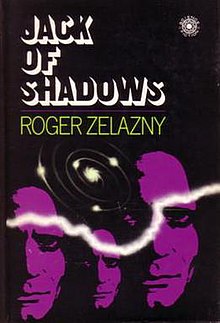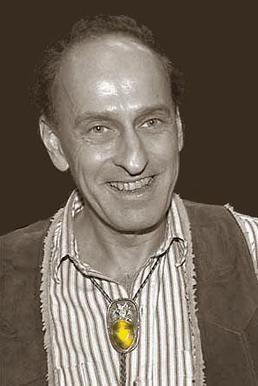
Roger Joseph Zelazny was an American poet and writer of fantasy and science fiction short stories and novels, best known for The Chronicles of Amber. He won the Nebula Award three times and the Hugo Award six times, including two Hugos for novels: the serialized novel ...And Call Me Conrad (1965), subsequently published under the title This Immortal (1966) and then the novel Lord of Light (1967).
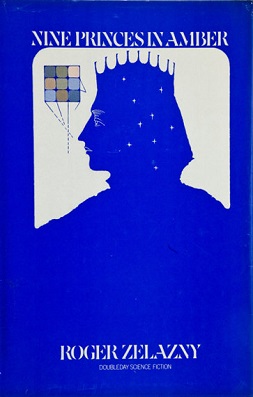
The Chronicles of Amber is a series of fantasy novels by American writer Roger Zelazny. The main series consists of two story arcs, each five novels in length. Additionally, there are a number of Amber short stories and other works. While Zelazny's will expressly forbade sequels by other authors, four posthumous prequels authorized by Zelazny's family were authored by John Gregory Betancourt.

Creatures of Light and Darkness is a 1969 science fiction novel by American writer Roger Zelazny. Long out of print, it was reissued in April 2010. The novel is set in the far future, with humans on many worlds. Some have god-like powers, or perhaps are gods—the names and aspects of various Egyptian gods are used. Elements of horror and technology are mixed, and it has points in common with cyberpunk.

Joe William Haldeman is an American science fiction author.

Michael Swanwick is an American fantasy and science fiction author who began publishing in the early 1980s.

The Guns of Avalon is fantasy novel by American writer Roger Zelazny, the second book in the Chronicles of Amber series. The book continues straight from the previous volume, Nine Princes in Amber, although it includes a recapitulation.

Roadmarks is a science fantasy novel by American author Roger Zelazny, written during the late 1970s and published in 1979.

Eye of Cat is a 1982 science fiction novel by American writer Roger Zelazny. It was among his five personal favorite novels from his own oeuvre.

"A Rose for Ecclesiastes" is a science fiction short story by American author Roger Zelazny, first published in the November 1963 issue of The Magazine of Fantasy and Science Fiction with a special wraparound cover painting by Hannes Bok. It was nominated for the 1964 Hugo Award for Short Fiction.
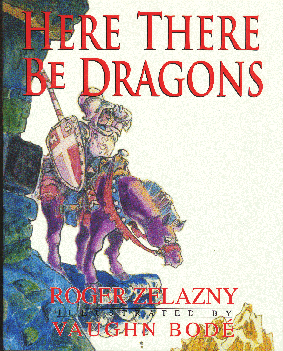
Here There Be Dragons is a children's book by American writer Roger Zelazny. It is one of two stories he wrote for children, the other being Way Up High, and one of three books without heroic protagonists. The two children's books were first published with separate dust jackets but sold only in shared slipcases bearing the title Here There Be Dragons/Way Up High . One thousand copies of each book were produced in 1992 signed by Zelazny with illustrations by Vaughn Bodē.

Deus Irae is a post-apocalyptic science fiction novel started by American author Philip K. Dick and finished with the help of American author Roger Zelazny. It was published in 1976. Deus irae, meaning God of Wrath in Latin, is a play on Dies Irae, meaning Day of Wrath or Judgment Day. This novel was based on Dick's short stories "The Great C" and "Planet for Transients".

NESFA Press is the publishing arm of the New England Science Fiction Association, Inc. The NESFA Press primarily produces three types of books:

To Die in Italbar (1973) is a science fiction novel by American writer Roger Zelazny. To Die in Italbar follows Mr. H, a man who needs only to touch someone to heal or hurt them, during a deadly galactic pandemic.
The 26th World Science Fiction Convention (Worldcon), also known as Baycon, was held on 29 August–2 September 1968 at the Claremont Hotel in Berkeley, California, United States.
Underwood–Miller Inc. was a science fiction and fantasy small press specialty publishing house in San Francisco, California, founded in 1976. It was founded by Tim Underwood, a San Francisco book and art dealer, and Chuck Miller, a Pennsylvania used book dealer, after the two had met at a convention.

This Immortal, serialized as ...And Call Me Conrad, is a science fiction novel by American author Roger Zelazny. In its original publication, it was abridged by the editor and published in two parts in The Magazine of Fantasy and Science Fiction in October and November 1965. It tied with Frank Herbert's Dune for the 1966 Hugo Award for Best Novel.
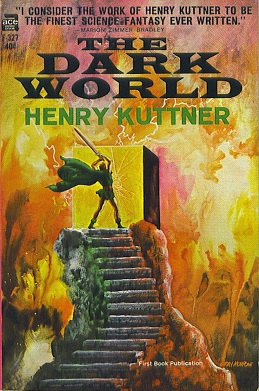
The Dark World is a science fantasy novel credited to Henry Kuttner, although his wife C. L. Moore may have been an uncredited collaborator, or possibly even the author. The novel was first published in the July 1946 issue of Startling Stories, then reprinted in the Winter 1954 issue of Fantastic Story Magazine. Its first book edition was issued by Ace in 1965, followed by a British edition by Mayflower Books in 1966. A French translation appeared in 1972. The novel was reprinted in full in Issue #5 of Amberzine in 1992, and also collected in a 1997 paperback omnibus, The Startling Worlds of Henry Kuttner. Roger Zelazny, author of The Chronicles of Amber, credits this book as being one of his primary influences during his youth.
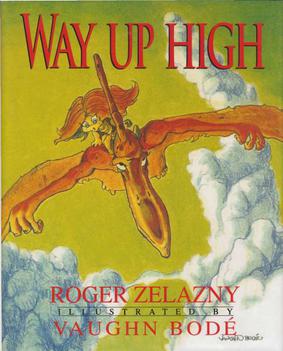
Way Up High is a children's book by American writer Roger Zelazny. It is one of two stories he wrote for children, the other being Here There Be Dragons, and one of three books without heroic protagonists. One thousand copies of each of the two books signed by Zelazny were published in 1992 with illustrations by Vaughn Bodē.
This is a complete bibliography by American science fiction author Larry Niven:
This is a partial bibliography of American science fiction and fantasy author Roger Zelazny.
